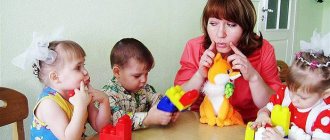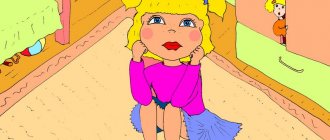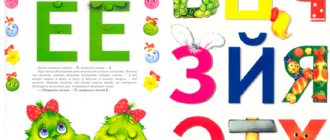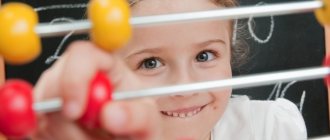Don't expect school to teach your child everything. Just as a mother teaches a baby the first steps, the basics of reading should be laid in the first years of life. You can’t start learning the alphabet from scratch - instill a craving for literature in your child in advance, before he goes to first grade.
Children are proud of their ability to read
Start with speech development
Before learning to read, a child must learn to speak. And the correctness of speech development directly depends on their environment. The more intelligent the parents, the more attention they pay to the younger generation, the easier it is for the child to develop.
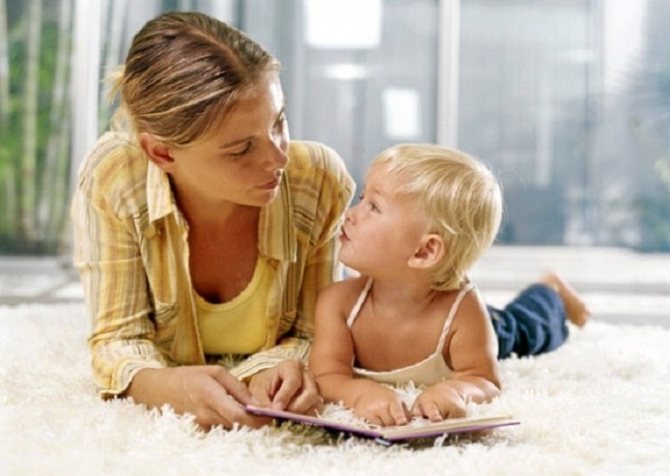
From the first days you need to work with your baby on speech development
Starting the first communications with adults through hooting, the baby gradually tries to imitate the speech sounds that he hears every day. And if at first these are just individual syllables, then already from the age of 2 years of normal development the child can operate with simple sentences.
Further - more, the baby moves on to word forms. And the more actively the parents communicate with the child, the more talkative he will be (in a good way). The main help in the development of a child’s speech will be reading, i.e. books that adults will read aloud to their children.
Develop your baby's interest in reading
Naturally, a small child cannot read on his own. But you can accustom him to communicate with literature from the first years of his life. It is children's books that form the correct speech development of the baby. The more often a child sees a book in the hands of his parents, the more confidence he develops in it, and the faster over time the desire to learn to read independently appears.
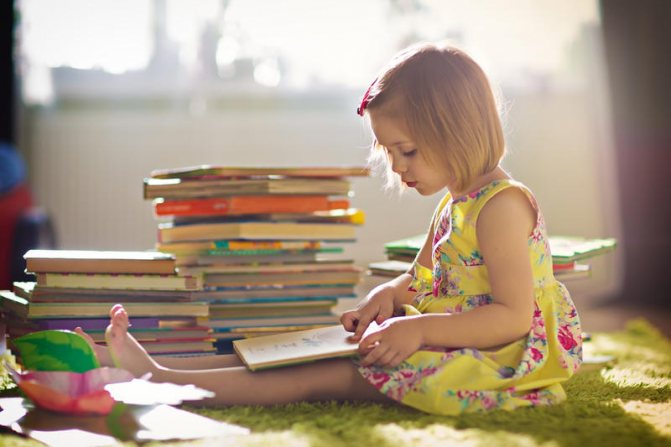
Interest in reading develops in a playful way
Reading should be turned into a kind of ritual - fairy tales, nursery rhymes, lullabies are best perceived before bed. The clearer and more correct the adult’s pronunciation during reading, with emotional connotation, the more memorable the phrases the child will hear will be.
And the clearer the baby’s visual images will appear. And this will further help in learning to read. After all, the better a child thinks in images, the faster and easier he learns.
About the benefits of family reading
To develop children's skill, they should read fairy tales aloud from preschool age. The child must develop not just an interest in literature - the book must become a symbol of psychological “pleasure”.
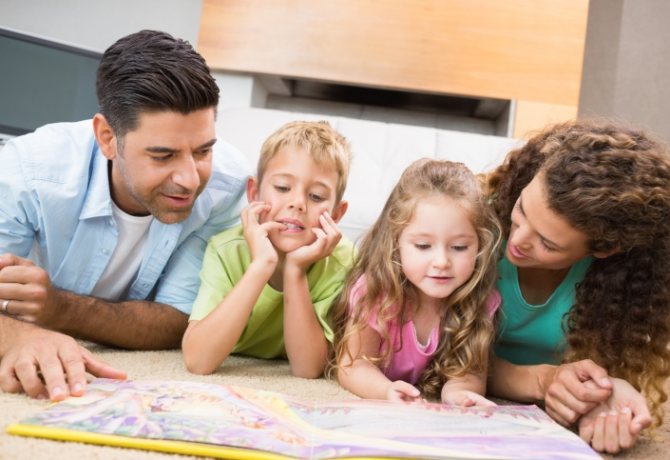
Family reading develops children's interest in it
And in the future, even magazines and books standing on shelves (and not in the hands of parents) will be associated with positive emotions and attract the child’s attention. In other words, reading books to your child instills a love of literature for life, giving impetus to the fastest learning of independent reading.
In addition, reading to children promotes their spiritual unity with their parents, bringing joy to everyone. And the child develops a feeling of family comfort, which he associates with books. In a family where there is a cult of books, children quickly develop a desire to read.
Read with your children
The best way to prepare your child for independent reading is to read a book while sitting next to your baby. He should see the pages of the book on which the text is written. This will first allow you to visually get used to the letters that involve you in the world of the sacraments.
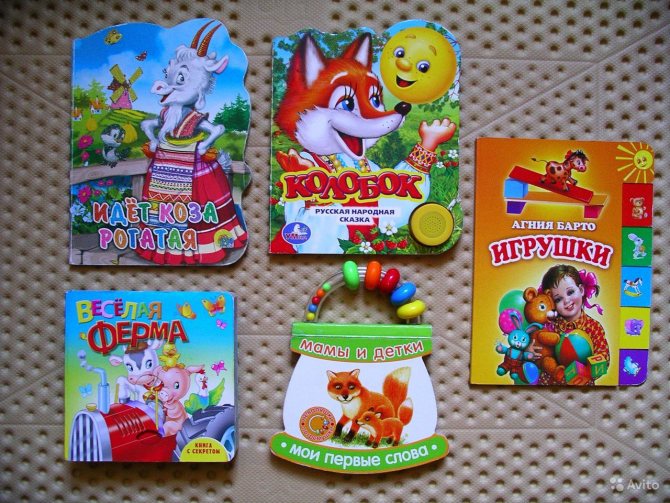
A child’s first books should be of high quality and bright
It’s not for nothing that the first children’s books are rich in colorful illustrations. With their help, you can perceive what you hear in images drawn in the pictures. And when the child goes to first grade and begins to put letters into words, familiar phrases will already be perceived figuratively, which will make it faster and easier to learn to read.
While reading a fairy tale or nursery rhyme, try to move your child’s finger over the letters so that the baby can see which word you are reading. Visual memory will help with proper learning in the future.
The child is growing up and yesterday’s baby is already interested in reading? Or not interested, but you feel it’s time? Modern bookstores have a huge variety of aids for teaching reading. This is, of course, good - there is plenty to choose from. But there are also disadvantages to this - it’s easy to get confused and miss out on truly valuable publications in the diversity of the book world. This collection contains the best textbooks for teaching reading to children 4-6 years old. Choose according to your taste. The main thing is that the lesson time is appropriate to the child’s age and takes place in a relaxed atmosphere. By the way, it is also better to choose books for first reading from proven ones. Let your child's learning be easy and joyful!
Daria Gerasimova “The ABC of Transformations”
The alphabet in this book is not classical, but is presented in a light poetic form. Each letter is described by some object starting with that letter. Both the verses themselves and the letters are easy to remember. Cheerful illustrations harmoniously complement the text, and the book itself exudes coziness and a certain handicraft. The book has an envelope, and in it are coloring cards. The cover was also creatively done: the letter A has hair made of threads, because it is known that fine motor skills and tactile activities help the brain with the development and acquisition of speech. So this publication can be considered not only fun, but also useful. In this way, you can start learning letters from the age of two. A4 format, high quality printing. Thick cover, 64 pages.
Nadezhda Zhukova “Primer. Tutorial"
This primer has already become a classic. There are no entertainment elements in it, only educational techniques that are designed to help you master reading quite quickly and easily. The methodology is based on traditional teaching of reading with the original approach of a speech therapist. Its essence is that it is explained to the child that one sound seems to “run” to the next, combining into words. As a result, there is an awareness of the letter combination as a whole word, expressed graphically. It is important that before you and your child begin to learn the alphabet, the baby is not familiar with the letters, otherwise confusion may arise, because words do not consist of letters, but sounds. You can start studying as early as 3–4 years old.
Zhutaute Lina “Tosya-Bosya plays with letters”
As the name suggests, Tosya-Bosya plays with letters rather than studying them. In essence, the book helps to consolidate in a playful way what has been previously learned. There are also tasks for very young children (from about 3.5 years old): tracing letters along dotted lines, looking for your name among the letters of the alphabet, coloring letters, making appliqués, connecting a letter with a corresponding object. There are also tasks for older children: anagrams, drawing more complex images, copywriting. Therefore, playing with this book can be extended over a long period of time, up to 6 years. Vivid illustrations, high-quality printing. Suitable not only for Toshi-Boshi fans.
Elena Uleva “Trainer. Issue 1. Reading short words"
After the child has learned all the letters, it is quite logical to try to combine them into words. Little by little - from syllables and short, simple words - the simulator tells you how to move on to reading more complex and longer words, and then sentences. After reading a word, the child is asked to complete an additional task, which is designed to motivate him to read in the future. With the advent of the realization that reading opens the door to a new world, the child can no longer be stopped, he wants to read more and more, and now he is already reading store signs and all the inscriptions that he encounters on his way. And there it’s not far from a volume of some great classic. Soft workbook, tasks are colorfully illustrated, 32 pages.
Yulia Pchelintseva “Slovolodochki. Mom, teach me to read! Author's reading course"
This author's technique helps to quickly teach a child to read correctly. The approach is traditional: the child learns sounds and letters, puts the letters into syllables, and the syllables, using special “boats,” are linked into words. The uniqueness of this technique is that the book can be used at any stage of learning to read: you can only know the letters, already be able to add syllables, or try to read the first words. This book is also good because it contains a lot of practical advice: where to start learning to read, at what age is it better to do it, what to do if the child does not listen to what they are trying to explain to him and where to gain patience for learning if he lacks.
Yulia Danilova “Super-effective reading simulator for little students”
Do you know who the bullies are? They are such funny characters and always a lot of fun to be with. They love to play pranks, scare each other and make up different stories. Buzayki will also teach your child to read. Not right away, of course, but gradually, by reading the simple exclamations of the characters in the book, you can really learn to read. The main thing is that the learning process will take place casually, in a relaxed atmosphere. The complexity of tasks goes from simple to complex. Funny unexpected tasks, naughty puzzles, bright illustrations and a simple plot will captivate your child. This is a truly effective simulator, but it requires the emotional involvement of an adult. Yulia Danilova is a teacher with extensive experience, the author of methods for teaching children. Check out her “A Primer for a Very Busy Mom.” 64 pages, softcover. The book is almost A4 in size.
Olesya Zhukova “Reading trainer”
A manual with tasks for developing reading skills. Large letters are accompanied by bright, clear pictures. Exercises are based on the principle “from simple to complex.” Words are divided into syllables, most tasks are based on mastering syllabic reading. A colorful training book not only teaches reading, but also develops thinking, attention, and memory. Large format manual, good quality paper, color illustrations. 32 pages, softcover. The author of the book is a specialist in child development, a teacher with extensive experience. If you like her reading simulator, pay attention to the author’s other manuals: “Speech therapy primer”, “Large recipes for a speech therapy primer”, “Neurologopedic recipes. We learn letters”, etc.
Evgenia Kats “Learning to read. Let's play with letters. For children from 6 years old. Federal State Educational Standard"
Zhenya Katz is known for her textbooks on mathematics (“Mousematics”) with non-trivial and varied exercises. So this book contains unusual tasks for learning to read: how many letters “K” are in these words; circle “P” in blue and “M” in red; which letter has changed, etc. The manual contains many games with letters and words. The tasks and puzzles are aimed not only at mastering reading, but also at selecting rhymes, counting, logic, and attention. Bright, simple illustrations help you better understand the material. The font is large, high-quality printing. 48 pages, softcover.
Uzorova O., Nefedova E. “350 best exercises for teaching reading”
The manual from well-known practicing teachers is built on the principle of “one day - one lesson”. First, the child masters letters, then simple syllables, and then short words and simple sentences. No more than seven minutes a day - you must agree, it is quite possible to find an opportunity for such short activities - and your child will learn to read. At the beginning of the book there is a note for parents. For example, there are important tips: do not overdo it when studying with your baby, so as not to discourage the desire to learn. And also repeat what you have covered during a walk, between times, before going to bed. 96 pages, softcover. A4 format.
Daria Sukhova “Global reading. Primer + set of cards. A manual with instructions for classes with children from 3 years old"
The primer contains syllabic tables, exercises for reading letters, and then simple syllables. Non-trivial tasks are also present: find a letter in a word, find a certain letter among other letters, etc. The primer comes with a set of cards printed on 26 sheets. The manual contains a QR code where you can find additional materials. The tasks are aimed not only at teaching reading, but also at developing memory, attention, and spatial thinking. 216 pages, hardcover. Large format. The author of the book is a teacher with twenty years of experience, including with dysgraphic children. Daria Sukhova has also published several manuals on reading and arithmetic.
How to properly teach a child to read?
The sooner a child is ready to perceive, the better - when he goes to 1st grade, he should master the basics of reading. Even if the baby goes to kindergarten, where he is taught using a special method, parents should also set aside time for joint activities.
How to approach the process itself correctly so that learning is easy? You cannot teach children by force - everything should happen in a playful way. When choosing a technique, you should also take into account the age at which training began.

It is necessary to develop the correct pronunciation of sounds
But in any case, you shouldn’t learn just letters - you should start with phonetic sounds. It will be easier for the child to associate the written symbol with the sound that he is accustomed to hearing.
Learning is easier if each lesson learned is repeated many times. From the moment you learn sounds to reading syllables, monitor your baby’s clear pronunciation of speech.
Stages of training
It is impossible to teach a child to read quickly without a special technique, as well as without an appropriate (consistent) systematics.
- Choose the right manual to teach your children. Recently, there are several options for primers on sale. Choose one that will be interesting to your child (you can go shopping with him). Even if there are fewer pictures there, it should be based on speech therapy techniques (for example, N.S. Zhukova’s alphabet).
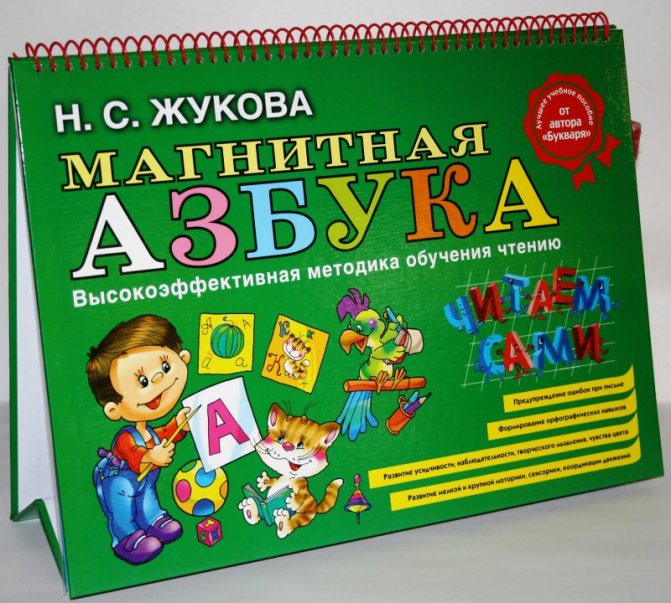
Magnetic alphabet by N.S. Zhukova - When the manual is purchased, begin step-by-step learning of sounds:
– first learn all the vowels;
– then move on to mastering voiced hard consonants, paying attention to correct pronunciation;
- then comes the turn of dull sounds;
– leave the sizzling ones for last.
- Repeat each sound you learn before starting to learn the next one. “Repetition is the mother of learning” - this phrase should become the guiding thread of the entire learning process.
- In parallel with studying sounds, begin to form syllables (and the very first one can be “ma”, which will be close and sincere to the child). Read the syllable together with your baby, as if singing it. The child should have the feeling that the consonant sound seems to be striving for a vowel. This will help you pronounce sounds in pairs.
- Do not try to immediately form the learned syllables into words. Let the child first understand the principle of combining vowels and consonants in pairs. Consolidate your knowledge on simple syllables, gradually moving on to difficult to pronounce ones.
- Having taught your child to form syllables where the consonant sound comes first, proceed to a more complex structure where the vowel comes first (“om”, “ab”, etc.).
- Having become comfortable with individual syllables, transfer children to reading simple words. Start with those that consist of 2 syllables, then 3-syllables. But the first words that a child reads should be familiar to him and associated with understandable images.
Consultation “Formation of reading skills in children 5–7 years old. Recommendations"
Natalia Alykova
Consultation “Formation of reading skills in children 5–7 years old. Recommendations"
Formation of reading skills in children 5-7 years old. Recommendations.
What young parents and kindergarten teachers who are working with their child to develop reading skills .
Speech reading centers are formed by the age of 6-7 years . But for the majority, an interest in reading appears already by the age of 5, that is, the child begins to be interested in letters, tries to understand what is written in books, on store windows or on advertising signs. This suggests that the child is psychologically ripe for learning a new skill , and this may be some kind of signal for you to start regular classes with your child. But this does not mean that you need to wait for this moment and then urgently begin special classes. Firstly, each child is unique in his development, it is necessary to take into account his age and individual characteristics, and be extremely careful so that the child does not lose interest in new knowledge. Secondly, the process of reading is not mastered at once; preparation is carried out from birth, i.e. it means protecting the physical and mental health of the child, the development of the child in accordance with age standards, and proper upbringing in the family. If there are any deviations in the child’s development, in accordance with development standards, measures must be taken to eliminate or compensate for them; the sooner, the greater the chance that the child will develop normally, and you will not have serious obstacles to learning new things during independent studies with child.
Here are the most important factors indicating a child’s full readiness to master the reading :
- no problems with pronunciation (all sounds are present, the correct tempo is maintained (9-14 sounds per second according to M. E. Khvattsev)
and rhythm of speech
(without stuttering)
;
- there are no hearing problems (the child does not ask questions many times, does not distort simple words, understands you without looking at your face);
- proficiency in coherent speech (a rich vocabulary, the ability to construct phrases, to clearly express one’s thoughts not only for relatives, who at the everyday level are accustomed to understanding each other perfectly, but also for everyone around them);
- developed phonemic hearing (the child must be able to freely distinguish speech sounds; correctly reproduce sounds and syllables in the required sequence, for example, z-s-z, ba-ba-pa; name the first and last sound in a word; based on heard sounds pronounced at intervals in a few seconds, understand this word, for example, to....o.... t = cat);
- free orientation in space (the child correctly uses the concepts of “right”
,
“left”
,
“top”
,
“bottom”
etc.).
Correctly TEACHING TO READ correctly!
1. CHOOSE A TRADITIONAL METHOD OF TEACHING READING ! That is, first the child learns sounds, then learns to merge them into syllables, and syllables into words. This technique promotes the development of phonemic hearing, elimination of speech defects, develops the skills of sound analysis and synthesis, and prepares for written speech. The technique is used in all schools, so the child does not have to relearn.
2. LEARNING SOUNDS, NOT NAMES OF LETTERS! When pointing, for example, to the letter B, call it not [BE], but [B], R - not [ER], but [R], L - not [EL], but [L], etc.
3. ASSOCIATIONS FOR MEMORIZING LETTERS AND SOUNDS SHOULD HELP, NOT HINDER! There is no need to try to correlate the image of a letter with a specific picture whose name begins with this letter, for example A - shark. Associations with the same picture will not contribute to the development of reading skills , because seeing the letter A in another word, for example, in the word “PINEAPPLE”
the image of a SHARK will not help a child read it in any way.
It is much more effective to correlate the image of a letter with the sound it denotes, for example, the letter T denotes the sound [T], and for better memorization this sound can be correlated with a similar sound in reality, for example, imitating the sound of a hammer [T-T-T]. The letter itself looks like a hammer, in this case, seeing “hammer”
, the child will remember the sound [T]. Such associations will make it possible to differentiate images of letters that are similar in spelling and sounds that are similar in pronunciation. Often such associations are offered in speech therapy primers, but it is possible to come up with your own.
4. WE ESTABLISH THE RELATIONSHIP BETWEEN THE SOUND AND THE LETTER! We read and write letters, and we hear and pronounce sounds. Each letter, except for b and b signs, denotes a specific sound. It’s better to first hear a new sound, pronounce it exaggeratedly, and then see what letter it was written in so that we can read it.
5. CONSTRUCTION OF LETTERS ! To better remember the image of a letter, sculpt it from plasticine, fold it out of sticks, buttons, and ropes. Pay attention to the number of elements and their location. (This article is not about writing, since the methodology of teaching writing is a separate topic).
6. WHEN LEARNING A NEW SOUND, PAY ATTENTION TO ARTICULATION! Go with your child to the mirror and carefully examine the position of the organs of articulation when pronouncing a particular sound. When several sounds have been learned, play “Deaf and Mute”
, show your child articulation without sound, and let the child guess what sound you were going to make, then switch roles. Later, let the child not only name the guessed sound, but also show the corresponding letter in a book, on a magnetic board or on cubes.
7. EXPLAINING THE CONCEPTS OF “VOWELS AND CONSONANTS”
PAY ATTENTION TO THE PRESENCE OR ABSENCE OF OBSTACLES IN PRONUNCIATION
(LIPS, TEETH, TONGUE)
.
Vowels do not experience any obstruction during pronunciation, air passes freely through the mouth, i.e., only the voice participates in the formation of sound, hence the name “vowel,”
if lips, teeth, and tongue take part in pronunciation, then it is a consonant sound.
Do not establish a connection between vowels as singing sounds, since many consonant sounds can also be sung (M, V, Zh, Z, L, R, etc.)
.
Often, during sound analysis at school, a child who does not remember which of the sounds are vowels and which are consonants, operating with the concepts “sung”
,
“not sung”
, gets confused, because an attempt to sing some consonant sounds turns out to be successful and then the consonant is identified as a vowel.
In addition, when we show a child the principle of merging sounds into syllables, at first we deliberately use “singing”
consonants so that the child has the opportunity to smoothly transition from a consonant sound to a vowel, for example, when reading the syllable MA for the first time, he pronounces the sound m and for a long time smoothly transitions to the sound A. Knowledge of long- and short-sounding consonants helps in the future to correctly dictate to oneself when writing and avoid mistakes characteristic of some types of dysgraphia.
8. WE WORK IN PARALLEL ON THE DEVELOPMENT OF PHONEMIC HEARING! When learning a specific sound, the child must hear in what position the sound is in the word, at the beginning, middle or end. We learn to determine by ear the presence or absence of a sound in a word, at the next stages to distinguish between a vowel and a consonant, later voiced and voiceless, hard and soft sounds.
9. WHEN STUDYING THE FIRST SOUNDS, WE IMMEDIATELY START TEACHING THE SKILLS OF CONNECTING THEM . To do this, we draw an imaginary bridge from letter to letter. We point our finger at the first letter and pronounce the sound until we “walk across the bridge”
to the next letter, having reached the second letter, we pronounce the corresponding sound, for example, [a-a-a-a-u-u-u-u], [n-n-n-n-a-a-a-a] . It is important at first to use letters denoting vowels and SINGING consonant sounds, which can be drawn out, smoothly connecting with another sound. Later, when connecting an EXPLOSIVE consonant sound with a vowel, passing along the bridge, you need to avoid repeating the first pronunciation, avoid repeated, abrupt sounding, not [D-D-D-a-a-a-a], but [D-a-a-a-a]. a-a-a]. The ability to form and read syllables and short words from a minimum set of learned letters requires adherence to a certain order of learning the letters. There are many principles for the order of learning letters and each has its own scientific validity, but none of the principles provides for learning letters in the alphabet. The alphabet is the ordering of letters for keeping them in the head, for easy navigation in lists, in dictionaries, i.e. for quickly finding words, and this will be useful only after the child learns to read.
10. PAY ATTENTION TO THE CONSONANTS - BROTHERS! It is necessary to point out letters whose sounds are similar in sound, for starters, consonants with dull voicedness, in the pronunciation of which the same organs of articulation are involved, but when pronouncing a voiced sound, the voice is also included. The child understands this more easily with the following explanation: pronounce the sound [ B], now quieter, in a whisper, what sound do you hear? Sound [P]. Name two brothers. Which one is voiced (voiceless? Another option: say the sound [S], now turn on your voice, what sound do you hear? Sound [Z]. Name the voiced (voiceless) one)
brother At the same time, we control the presence or absence of a voice with our hand on the throat; if the throat vibrates, we pronounce a voiced sound, if not, a dull sound.
11. PAY ATTENTION TO THE VOWEL LETTERS - BROTHERS. There are only 6 vowel sounds, and 10 letters. Some represent one sound (A, O, U, Y, E)
and dictate to the consonant
(except Ch, Sh, Y)
to read firmly
(angrily)
.
Others (E, E, Yu, Ya, I)
in certain positions indicate two sounds and always dictate that the preceding consonant
(except Zh, Sh, Ts)
be read softly
(affectionately)
.
This information is difficult to understand and will only be needed at school, and children who are just learning to read only need to know about vowels - brothers - that some make the consonant soft and affectionate, while others do not. The vowels E, E, Yu, I are studied almost at the very end. When starting to study the vowels of the second row (except I),
you need to ask to pronounce the sounds that the vowel letter means and ask what other vowel it calls. For example: listen to how
“I”
, say [Y-A-A-A-A- A-A], what familiar letter does she call? A! The letters A and Z are brothers. In this way, it is easy to establish the pairs Y-A, E-O, E-E, Yu-U, and And although she does not call Y, she also needs a pair, so she is friends with Y.
Suggest a game “Tender - angry syllable”
: the presenter names the syllables, first in pairs, for example, ma - me, se - se, etc., if the child hears a hard consonant in a syllable, then he knocks his palm on the table or knee, if it is soft, he strokes it.
When the child begins to distinguish between softness and hardness by ear, then you can complicate the task, let him show where “ma”
, and where
“me” is written
, etc.
12. WE EXPLAIN THE ROLE OF L AND Ъ SIGNS! The role of ь and ъ signs, as well as the topic with vowels of the second row, has its own complexity, therefore we introduce children to these letters last . But to read to a child, it is enough to understand two points:
1. "b"
, like the vowels E, E, Yu, I, I
(with which the child is already familiar)
after a consonant dictates to him to read softly.
We practice reading words - paronyms like: chalk-chalk, mole-mol, ate-fir, corner-coal, brother-take, steel-steel. It is important to pay attention to the meaning of the words, correlate what you read with the pictures and notice that if you read it , the meaning of the word changes, i.e. the word turns into another.
2. ь and ъ signs separate a consonant from a vowel; when we see ь or ъ before a vowel, we must stop and read the consonant and vowel separately, without merging into one syllable. To better understand this principle, you can use your palm to depict a bicycle riding along the road, which, in the place of the ъ and ь signs before the vowel, falls into a hole, then again rides smoothly along the road. It is necessary to explain in words - paronyms, that if read , the meaning of the words changes, for example: seed - family, sat down - ate, Semka - shooting.
13. READING SHOULD BE SENSITIVE, NOT MECHANICAL! It is desirable that even individual letters and letter combinations read carry a certain meaning, for example, AU - a cry in the forest, UA - the cry of a child, IA - the onomatopoeia of a donkey. We explain that one letter can also be a word or a sentence. For example, in the phrase “The cat is on the porch”
there is a small word
"y"
.
To distinguish words in sentences, it is useful to count the number of words in this sentence on your fingers with your child. One letter can also represent an independent sentence, for example, “A!”
- we rejoice at the meeting,
“Oh!”
- we are surprised at something,
“Huh?”
- asks the deaf grandmother,
“A.”
- the doctor asks you to open your mouth,
“Uh!”
- we are disappointed.
You can play out various situations and pay attention to various punctuation marks, which are easily remembered when reading such sentences. This is necessary so that the child does not perceive reading mechanically , but learns to understand the meaning of what he read; for the same purpose, it is necessary to show pictures or objects whose names the child has just read.
14. CONSTANT REPETITION OF LEARNED LETTERS AND SOUNDS IS IMPORTANT! Classes should be systematic, for a 5-6 year old child approximately 3 times a week, every other day for 20-30 minutes, postponing classes only in “emergency” situations.
cases. Only 1 letter should be studied in one lesson. Before learning new material, be sure to review what you have already covered.
15. WE FOLLOW THE PRINCIPLE “FROM SIMPLE TO COMPLEX”
!
16. WE STAY ON ERRORS UNTIL THEY ARE COMPLETELY ELIMINATED! If you find that your child has learned something poorly, stop there and do not move on to new material. If you notice that your child has begun to confuse letters or sounds, work on their differentiation. Once again compare the images of the letters, each element and their arrangement, come up with additional associations for the letters being compared, for example, the letter “E”
eeeeeeeeeeeed goes forward along the line, and
“Z”
is zzzzzz (key phrase
“Riding backwards”
) or the letter
“X”
is xxxx cold, it shrank, the letter
“F”
is hot, it is wide open, etc. To differentiate the sounds, play the game
“ Catch the sound”
, let’s say the child does not distinguish between the sounds [B] and [P], then before the game we again establish associations, they say [P] sounds quiet, as if blowing a feather from the palm of our hand [p-p-p-p], and [B] sounds loud, as if we are knocking with a stick [b-b-b]
(we imitate all actions for better memorization)
Then we give an instruction: I will name the words, if you hear the sound [P], then catch it - clap your hands.
We name words with sounds that the child cannot distinguish well, he listens carefully and determines whether the specified sound is in the word. To begin with, select words in which the guessed sound should be at the beginning or end, and later - in the middle. (Don’t forget that a voiced sound at the end of a word or before consonants (except for sonorants)
is deafened, so if we want the child to hear the sound [B], we give it in words in which it is at the beginning or middle of the word before a vowel or sonorant : bathhouse, side, fisherman, BUT NOT fish, forehead).
Correct pronunciation is the key to quick learning
Do you know how to teach a child to read quickly? Let him sing every sound and syllable he learns, but do it clearly. When you move on to pronouncing words, at first the syllables should be sung separately, with each subsequent time shortening the gaps between them. And ultimately, the entire word must be sung in one breath.
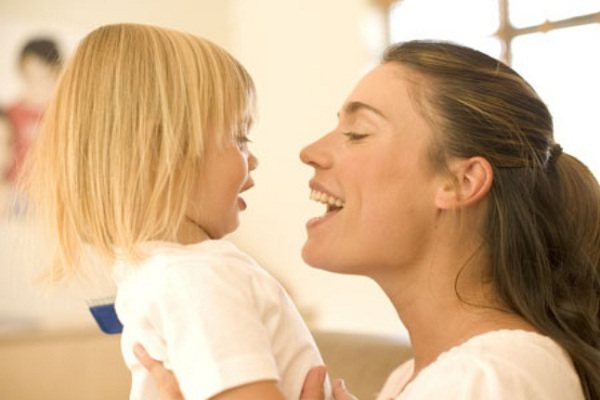
Singing sounds promotes speech development
But so that reading in children is not associated only with singing, the consolidation of the material should take place in normal pronunciation, with clear pronunciation of sounds. At the same time, when you move on to reading sentences, teach your child to take the correct pauses before punctuation marks.
When is the best time to start training?
At what age should children be able to read is a question many parents ask. This, first of all, depends on how psychologically prepared the child is for learning. But it should definitely be said that school should not begin immediately before school, when children are going to 1st grade.
Children can begin to be taught at the age of 3 years, if the child himself expresses a desire to do so. But you shouldn’t force them to sit down with books - this may discourage them from further learning.
The most optimal receptive age at which to prepare for 1st grade is 5 years. And in parallel with reading, children should be taught writing (for now only in printed letters), which will help them consolidate their reading skills.
How do you know when your child is ready?
To understand how to teach a child to read, you must first decide whether the child is ready for such learning. To do this, first test the degree of development of the child.
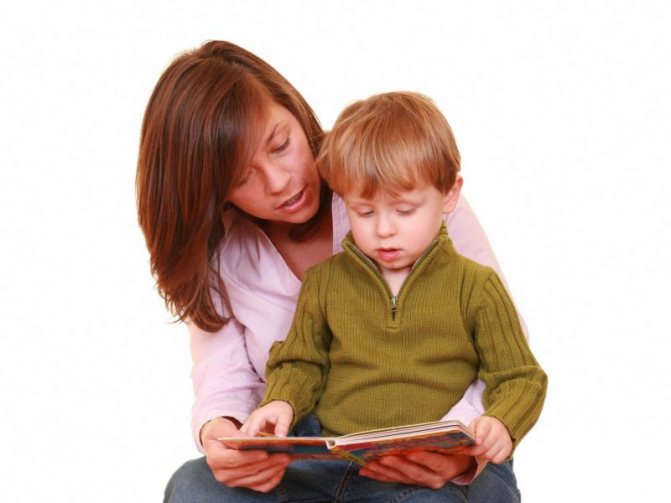
Make sure your child is ready to learn
- If children are already speaking in sentences, they are ready for the learning process.
- The development of phonetic hearing is an important factor. Correct perception of sounds, their differences and the ability to operate with them will help you quickly and easily teach your baby.
- A child who speaks incorrectly is not able to quickly learn to read, because... poorly perceives those phonetic sounds that he himself pronounces.
- If children do not have developed imaginative thinking, it will be difficult to teach them to read quickly - the process will turn out to be purely mechanical. And in the future, the procedure itself will be too tedious and uninteresting for the baby.
- The child must have the basics of logical reasoning, which allows him to compare facts in the learning process. Teaching reading by matching pictures and words
“Teaching reading to preschool children”
Consultation for kindergarten parents.
"Teaching preschool children to read."
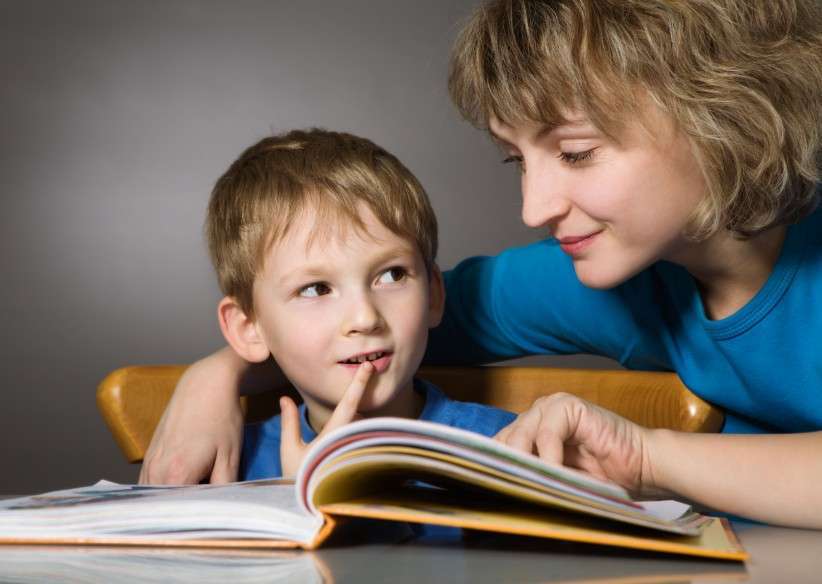
Author:
Kamyshenkova Vera Borisovna.
Teacher of MBDOU “Kindergarten No. 3 “Solnyshko”.
The city of Rasskazovo, Tambov region.
Description.
A child’s successful education in primary school largely depends on his overall development in preschool age.
“Not only the acquisition of literacy, but also all subsequent acquisition of the language - grammar and associated spelling - depends on how the child discovers the sound reality of the language, the structure of the sound form of the word.” D.B.
Elkonin. Learning process
The most interesting to read, but difficult and responsible. If children do not read correctly, fluently, and expressively, they will not be able to master literate writing. The question arises: at what age should we start learning sounds and letters? Moreover, paid supplementary education clubs now operate in kindergartens. As you know, in each group the children are the same age, but this does not mean that everyone is equally mentally developed. Therefore, children learn the same educational material in different ways. Some people work with interest in class and move forward, while others find it a burden, they “mark time” due to the fact that it is difficult for them to understand what is being said. And children with speech impairments, whose sounds are not defined, also work poorly. Such children do not hear sounds in words, confuse dull and voiced sounds, and lag behind in mastering the material. The individual characteristics of the child also influence. Effective learning to read directly depends on the development of children's cognitive abilities.
Psychologists believe
that at 4 - 5 years old it is easier for a child to learn to read than at 7 - 8, explaining this by the fact that a five-year-old child has already mastered speech well, but words and sounds are still interesting to him, he willingly experiments with them, easily remembers whole words, and then he begins to distinguish letters in them, and the adult can only give his interest the direction necessary to master the skill of reading. As a practitioner, I disagree with this. In my opinion, children memorize letters mechanically. During this age period, classes can only begin if the child shows great interest in reading activities and shows a desire to learn to read. Learning to read directly depends on the development of the child’s cognitive abilities, attention, memory, thinking, and fine motor skills. The attention of children at this age is scattered, fatigue sets in quickly, interest disappears, the child begins to get distracted and look for something else to do. Since a letter for a child is just another object in the surrounding world, an incomprehensible icon, it is difficult for him to understand why letters are needed and why they need to be memorized.
However, children are not always able to assimilate information received in a large group. Many children require individual lessons in order for them to understand the principles of adding syllables and words.
It is important to take into account psychological readiness for learning to read. Children are ready to start reading only if they already speak well, form sentences correctly in their speech, and phonemic awareness is developed at the proper level. Children should not have hearing or vision problems or speech therapy problems.
Parents do not take these factors into account. They believe that if they paid money, then the teacher is obliged to teach everyone. Yes, I agree with it. But without the help of parents and relationship with them it will not work. The requirements must be the same on both sides. Therefore, at meetings, through folders of movement, consultations, the teacher begins to acquaint parents with the process of introducing sounds and letters, offering and showing them various games for introducing sounds and letters. Conducts various forms of work with parents: round table, training, open viewing of educational activities, involves them in joint preparation and holding of holidays and entertainment.
And the child should also see that his parents are also interested in his education, play word games with him, help him print letters, reinforce the graphic image of letters, etc.
Among the huge selection of methods, teaching reading using Nadezhda Zhukova’s method is very popular. Her method is adapted for self-study by parents and children at home. Nadezhda Zhukova conducted a lot of research with preschool children, carefully studying the progressive processes of their speech development. She has created a unique technique with which children can quickly learn to read and easily move from it to writing. In her method, N. Zhukova teaches children to correctly add syllables, which she uses as a single part in reading and writing in the future.
A preschooler is able to perceive information only in a playful form. For him, playing is a calm environment where no one will scold or criticize him.
Do not try to force your child to quickly and immediately read syllables. For him, reading is not easy work. You need to be patient, show affection and love for the child during training. This is important to him now more than ever. Showing calm and confidence, you need to learn to form syllables, simple words, and sentences. The child must master the technique of reading. This process is not fast and difficult for him. The game will diversify learning, relieve you from the boring task of studying, and help instill a love of reading.
Don't miss classes
. At this age, the child should already understand that compulsory lessons await him at school. Such classes are also held in kindergarten. Therefore, start developing perseverance. Classes should be daily, but short, 10-15 minutes. Not more. Since longer classes can discourage the child from reading.
Praise the child
. Praise the way you would like to be praised. The child should feel that he is doing everything right, that his mother is happy. Then the performance will be better, and the child’s efforts will be greater. For a child, reading is a lot of intellectual work. So praise, don't be afraid. You can't spoil a child with this.
Constantly pay attention to different fonts
. A child very quickly gets used to one font, so he may get lost and stop reading when he sees another. Write the completed syllables and words yourself. Make up letter magnets, etc. The main thing is the variety of colors and fonts.
Don't overload it
. Always monitor the amount of information your child reads during training.
Main advice for parents.
If you feel that the child does not understand and an attack of powerlessness and anger rises in his throat, leave the room, asking someone to continue the lesson, or interrupt it for a while. No aggression. If the child does not understand, it means that the information has not yet reached, has not been comprehended. Don't put pressure on him. This doesn’t make it any easier for him, but it will be worse for you later.
Reading
- this is the main road to the land of knowledge. The child’s entire education will be based on the ability to understand what is written, on his ability to isolate the meaning of the text. Confident reading skills are one of the main conditions for children’s success in learning.
Training using the Nikitin method
Classics of Russian education, the Nikitins' spouses completely moved away from traditional teaching principles, putting forward their own instead. They believe that children should be given complete creative freedom in the classroom. Only then will they become interested in learning.
There is no need to limit the independence of children - they must do all the work themselves. The third rule is a combination of mental exercises and physical exercises (i.e., learning in a playful way).
Involve your child in joint activities - for example, you can prepare study guides together. And then the baby will perceive the material easier and faster. But the main incentive for successful learning is praise for even the most insignificant victory. And you should never focus on mistakes.
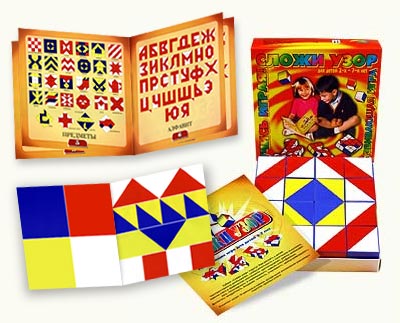
Here are the basic principles by which the Nikitins taught their children (and they can be applied to children 3 years old, 5, and 7):
- You cannot impose a specific learning program on a child - he himself chooses in the form of which game he is more interested in learning letters.
- There is no need to explain the course of the game to your child. Make your studies seem like a fairy tale, where each participant has their own role.
- In the first stages of play-learning, adults are active participants. In the future, when the child gets used to it, he will be able to continue classes on his own.
- A learning child should always be unobtrusively given tasks that will become more difficult at each new stage.
- Don’t dare tell your child – teach him to think for himself.
- If it is difficult for your child to cope with a new task, do not force him - take a step back and repeat what you have learned.
- If you notice that your child has lost interest in the game, or has reached the limit of his capabilities (temporary), stop training for a while. Get back to studying when your baby asks. And he will definitely do this, because... all children love to play.
MAGAZINE Preschooler.RF
Teaching literacy to middle preschool children.Preschool age is an important stage in the development of the future person and personality. It is by this age that a person completely masters speech, the first forms of thinking, and he begins to develop the ability for abstraction and generalization. Preschool age is characterized by a special, increased sensitivity to speech and its mastery. The child literally absorbs sounds, words, sentences. The main thing here is to present information in a manner appropriate to the age period. A child under 5 years old must still rest during the day, and learning must be combined with play. The successful development of speech in preschool age is crucial for the subsequent systematic study of the native language. D. B. Elkonin wrote that the reader operates with the sound side of the language, and reading is the process of recreating the sound form of a word according to its graphic, letter model. This implies the need for preliminary acquaintance of children with the broad sound reality of language. (before getting to know their letter symbols)
.
It is necessary to distinguish between speech and language. Language is a system of conventional symbols that convey combinations of sounds that have certain meanings for people. Speech is a collection of produced or perceived sounds that have the same meaning as a system of written signs. Speech is a unique characteristic of an individual; it speaks of his individuality. Different people pronounce the same word or sentence differently. Purposeful teaching of literacy and the formation of basic knowledge about speech increase the level of its arbitrariness and awareness, which, in turn, affects the overall speech development and improves the speech culture of children. Thus, there is a need for a two-way relationship between the process of language development and literacy learning. Research by linguists, psychologists, and teachers has shown that the fifth year of a child’s life is the period of the highest “linguistic giftedness
,” a special sensitivity to the sound side of speech. That is why it is necessary to introduce preschoolers into the sound system of their native language from the middle group of kindergarten, when the child shows the greatest interest in the sound form of the language, phonetic accuracy of speech, sound games, and word creation.
Preparation for learning to read and write is provided not only in older groups, it begins much earlier. Thus, already in the second younger group the ability to listen to the sound of a word is formed, children are introduced (in practical terms)
with the terms word and sound.
Education in the middle group should be aimed at developing phonemic hearing and speech attention of children, which prepares them for mastering the sound analysis of words - the first step in teaching literacy itself. Phonemic hearing is the ability to perceive the sounds of human speech. Researchers of children's speech (A. N. Gvozdev, V. I. Beltyukov, N. Kh. Shvachkin, G. M. Lyamina, etc.)
have proven that phonemic hearing develops very early.
By the age of two, children distinguish all the subtleties of their native speech, understand and respond to words that differ in just one phoneme (bear - mouse)
.
However, primary phonemic hearing, while sufficient for everyday communication, is not enough for mastering reading and writing skills. It is necessary to develop its higher forms, in which children could dissect the flow of speech, words into their constituent sounds, establish the order of sounds in speech, i.e., analyze the sound structure of a word. Elkonin called these special actions of analyzing the sound structure of words phonemic perception. The actions of sound analysis, as research has shown, do not arise spontaneously. The task of mastering these actions is set by adults to the child in connection with learning to read and write, and the actions themselves are formed in the process of special training, in which children are taught the means of sound analysis, and primary phonemic hearing becomes a prerequisite for the development of its higher forms. The development of phonemic hearing, the formation of a broad orientation of children in linguistic reality, the skills of sound analysis and synthesis, as well as the development of a conscious attitude towards language and speech constitute one of the main tasks of teaching literacy. Children with undeveloped phonemic hearing have difficulty learning letters, read slowly, and make mistakes when writing. Learning to read is more successful against the background of developed phonemic awareness. It has been established that the simultaneous development of phonemic hearing and learning to read and write have a mutual inhibition (T. G. Egorov)
. Orientation in the sound side of a word has a broader meaning than just preparation for mastering the beginnings of literacy. D. B. Elkonin believed that all subsequent learning of the language - grammar and associated spelling - depends on how the child discovers the sound reality of the language and the structure of the sound form of the word.
In my work I use games to develop phonemic awareness such as: “Wonderful transformations”
,
“Confusion”
,
“Whose house?”
, Tongue Twisters.
In my work, I continue to introduce the terms word and sound practically, without definitions, i.e. we teach children to understand and use these words when doing exercises and in speech games. Children learn that words are made up of sounds, that they sound different and similar, that the sounds in a word are pronounced in a certain sequence. I draw their attention to the duration of the words. The child develops the ability to distinguish between hard and soft consonants by ear (without isolating terms)
, identify and pronounce the first sound in a word in isolation, name words with a given sound, learn to identify a sound in a word with his voice: pronounce a given sound drawn out, louder, clearer than it usually pronounced, called in isolation.
For the first time for preschoolers, speech turns from a means of communication into an object of cognition (study)
and analysis, when its semantic side is “separated” from the formal side, on which children’s attention is concentrated.
They gain knowledge about the basic laws of speech:
- speech consists of words;
- there are a lot of words, and they name objects, their signs, the actions of objects;
- words have length (there are long and short)
; - they sound (consist of sounds)
; - the word is linear (the sounds in it follow each other)
; - You can make sentences from words;
- sounds in words are pronounced differently (some can be drawn out, while others are pronounced briefly)
.
The meaning of the terms word and sound is revealed to children in various exercises and didactic games without direct explanation. The main objective of the preparatory course is to develop the ability to intonationally highlight any sound in a word, which will allow children to examine the sound structure of a word (determine the presence or absence of any given sound)
.
Depending on the characteristics of the sound, it is pronounced in a word longer (“p”
,
“ry”
,
“s”
,
“s”
) or sharper, more clearly
(
“b” ,
“b”
,
“g”
,
“d”
) of all others sounds. When intonating a sound in a word, the child’s articulation changes and becomes controllable. This is what makes it possible to highlight the sound within a word. The only example of such pronunciation is the pronunciation of the teacher. In order to develop in children a full-fledged action of intonation of sound in a word, it is necessary to follow the following rules:
- the sound stands out against the background of the continuous pronunciation of the word;
- after it is isolated, it must be named in isolation;
- intonation highlighting of vowel sounds is not recommended, since when they are pronounced for a long time, the word breaks up into syllables and articulation no longer performs the function of examining the sound composition of the word;
- verbal material is selected in such a way that children practice isolating sounds located in a word in different positions: at the beginning, in the middle, at the end. You should not choose words ending with a voiced consonant, as it is deafened.
To make classes more attractive, facilitate the formation of rather complex skills and enhance the process of intonation, sounds are compared with natural ones or those that children hear in the world around them. They are called songs: "r"
- song of a big engine;
“zh”
is a song of a beetle, etc. For example, children are asked to name objects and in these words sing the song of a big motor
(r - cancer, torus - mouth, ball - r)
or the song of the wind
(sh - fur coat, cat - shka, reed –sh)
.
The introduction of a game situation makes it easier for them to complete the task. From the very beginning of training, a distinction is introduced in the hearing of hard and soft consonant sounds. Terms are not used: children call paired consonant sounds brothers: a hard sound is big brother, a soft sound is little brother, and identical consonant sounds are called friends. The basis of training is the feature of sound comparison: in games and exercises, preschoolers alternately name either a hard or a soft consonant sound. For example, in the game “Pump”,
children are asked to inflate the ball alternately with a large and small pump
(s - s - s, s - s - s)
.
In the middle group, assignments are given about the first sound in a word. For example, the task is given to make a bouquet of different flowers on a flannelgraph. The selected child takes the picture and names the flower, pronounces the word emphasizing the first sound, and then in isolation (r - chamomile, “r”
).
In the process of targeted training, preschoolers develop phonemic hearing, speech attention, and they acquire the knowledge necessary for conducting sound analysis of words and all further literacy training. I also use games for sound pronunciation: “Come up with a word”
,
“Clapperboard”
,
“Magic square”
,
“First-last”
,
“Magic transformations”
.
From the age of 3, we actively teach children speech etiquette - what can be said and what cannot be said. For better understanding by the child, we use joint retelling of what they have read, as well as games to enrich speech such as: “What can they do?”
,
“Words-comrades”
,
“Words on the contrary”,
etc. and games for vocabulary development:
“Who has what subject?”
,
“Guess by the description”
.
“Shopping to the store”
,
“Atelier”
, etc. Most children have flaws in pronunciation, so you should continue to use nursery rhymes, phrases, rhymes and tongue twisters for certain sounds.
Learning to read and write is of a general developmental nature, promotes the development of active mental activity, performance, moral, volitional and aesthetic qualities of the child’s personality. Particular attention is paid to gaming techniques and didactic games, which constitute the specifics of teaching preschoolers and are an essential component of this training. In the process of targeted training, children in the middle group develop phonemic hearing, speech attention, and they acquire the knowledge necessary for conducting sound analysis of words and all further literacy training.
Bibliography
- Education and training program in kindergarten / Ed. M. A. Vasilyeva, V. V. Gerbova, T. S. Komarova.-3rd ed., revised. and additional - M.: Mozaika-Sintez, 2005.-208 p.
- Alekseeva M. M., Yashina V. I. Methods of speech development and teaching the native language of preschoolers: Textbook.
aid for students higher and Wednesday ped. textbook establishments. - 3rd edition, stereotype. - M.: Publishing House , 2000.-400 p. - Teaching preschool children to read and write: Methodological manual/L. E. Zhurova, N. S. Varentsova, N. v. Durova, L. N. Nevskaya/Ed. N.V. Durova.- M.: School press, 2004.-144p.
- The world of childhood: Preschooler/Ed. V. A. Zaporozhets.-2nd edition, additional-M.: Pedagogy, 1987.-256 p.
- Formation of readiness to master reading and writing. Problems and solutions. A Alekseeva/Preschool education No. 2 2007
- Durova N.V. From sound to letter.-M.: School press, 2006.-24 pp.: color. ill.
| Next > |
Nikolay Zaitsev – teaching innovator
Traditional teaching based on the “phonemic-verbal” principle enslaves the freedom of speech of the child being taught and forms complexes in him, inhibiting his development - this is what teacher Nikolai Zaitsev believes.
He developed his own unique technique, more like a game than a lesson. Children move freely around the classroom (room). At the same time, they can jump, run, etc. You can master the educational material in any position - in motion or sitting, lying down. And this should start earlier - from about 3 years old.

Zaitsev cubes
All manuals are posted on walls, boards, cabinets, and tables. Usually this is a set of cardboard cubes. They are of different sizes and different colors. Some faces depict single letters, others – syllables (both simple and complex), and still others – consonants with a soft or hard sign.
Previously, the cubes can be in the form of blanks, which the teacher glues together with the children. In this case, special fillers should be placed inside:
- It is better to put sticks (wooden and plastic) into cubes with dull sounds;
- for ringing sounds, metal bottle caps are suitable;
- Bells will be hidden inside the cubes with vowel sounds.
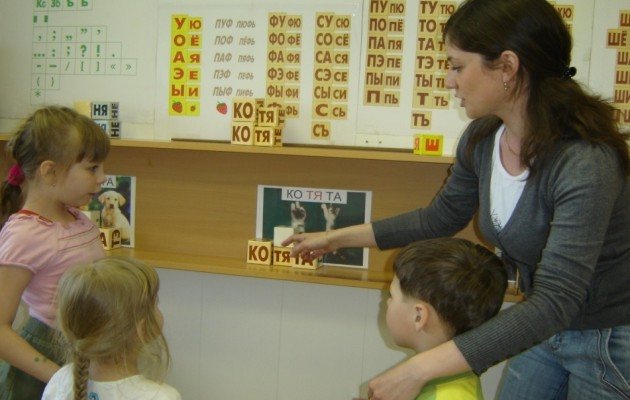
Cubes should differ in size (both single and double). For soft warehouses - small, for hard ones - large. Color solutions also play a certain role here - each warehouse has its own shade.
In addition to cubes, tables are also used as aids, where all known warehouses are collected. This allows the child to see the entire volume that is to be studied. And this makes the teacher’s job much easier.
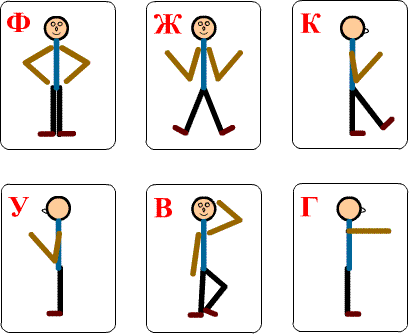
Memorizing letters by association
Another point that makes it quite easy to master reading is writing. It must run parallel. Before voicing the sounds being studied (not letters), the child himself must learn to translate them into signs. This can be done in various ways: moving along a sheet of paper with a pencil, across a table with a pointer, or laying out cubes.
Various teaching methods
There are constant debates among teachers about how to properly teach a child to read and what methodology to use. And there are quite a lot of them, and each has both its fans and opponents.
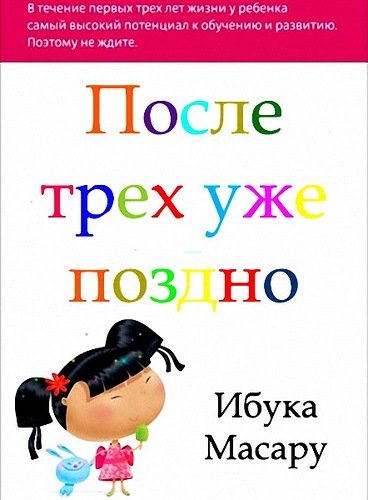
Book cover by Masaru Ibuki
For example, Masaru Ibuki’s motto in education is the phrase known to most: “After 3 years it’s too late.” The Japanese teacher bases his methodology on the belief that children under the age of 3 are the most susceptible to learning, during the period of formation of brain cells.
The method of Pavel Tyulenev, who created his “Mir” system, is also similar. Its main idea is to have time to reveal the child’s potential. The teacher believes that one should start from the first minutes of birth. In his opinion, children can learn to read and write before they can walk.
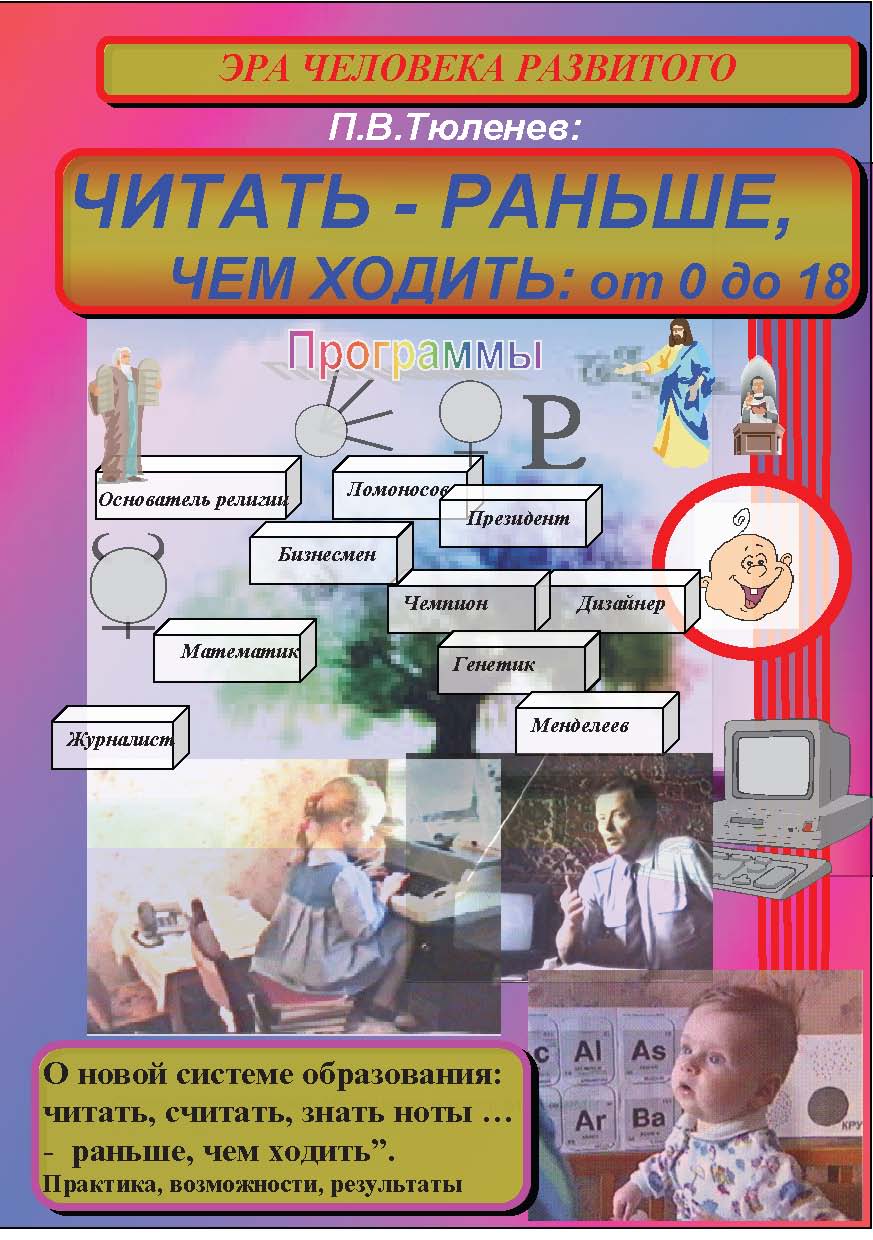
Pavel Tyulenev's method
But no matter what methods of teaching a child have been developed (according to Montessori, Froebel, Lupan, etc.), all teachers agree on one thing - learning should take the form of play and be based on love for children.
Knowing how to teach your child to read quickly, you will succeed. leave a comment
